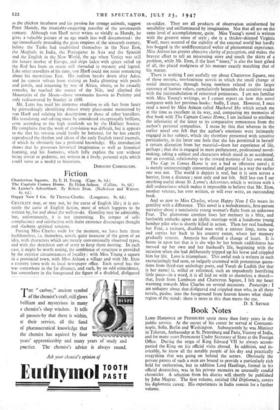To the Mountains of the Moon
THE PILGRIMAGE OF ARNOLD VON HARFF, the Hakluyt Society's publication for 1946, is one of the most interesting of the travel journals which that society has so ably brought- before the public. The title is perhaps misleading, for von Harff was not one of those conventional mediaeval pilgrims whose minds were wholly concen- trated on shrines and indulgences, but an enterprising and inquisitive traveller of the late fifteenth century who wandered over a large part of the then civilised world. Leaving his native Cologne in 1496, he combined in one vast tour pilgrimages to Rome, Mount Sinai, the tomb of St. Thomas in India (or so he claims), Jerusalem and remote Compostella, visiting also Venice, Cairo—where the Mamelukes were waging a civil war—Aden and Constantinople, where he had an audience with Sultan Bayezid II and a glimpse of the almost inaccessible Seraglio. " The eunuchs," he writes, " go about in their gold dresses, and are all stout and fat like beer casks, so that they can do no harm."
His journal, translated from the German by Mr. Malcolm Letts, is a fascinating mixture of myth, superstition and exact observation, of the dream-like vision of the Middle Ages and the eager curiosity of the Renaissance. His credulous reports of countless relics and miracles remind one of the pious English pilgrim Sir Richard Torkington; his traveller's tales of houses made from snail-shells are clearly derived from Mandeville, while his interest in trade, governments, gardens and architecture, his delight in such inventions as the chicken incubator and his passion for strange animals, suggest Peter Mundy, the insatiably-enquiring traveller of the seventeenth century. Although von Harff never writes so vividly as Mundy, he gives a valuable picture of an age much less well documented : the age immediately preceding the great empires of the sixteenth century, before the Turks had established themselves in the Near East, the Moghuls in India, the Portuguese in Asia and the Spanish and the English in the New World, the age when Venice was still the luxury market of Europe, and ships laden with spices sailed up the Red Sea from an orient still shrouded in mystery and legend. Like other travellers of his time, von Harff could not resist romancing about his mysterious East. His realism breaks down after Aden, and he cannot refrain from visiting an India glittering with pearls and jewels, and returning by way of Africa, where, so he casually remarks, he reached the source of the Nile, and climbed the Mountains of the Moon—those mountains known to Ptolemy and only rediscovered by Stanley in 1888.
Mr. Letts has used his immense erudition to sift fact from fancy by painstakingly identifying almost every place-name mentioned by von Harff and relating his descriptions to those of other 'travellers. His translating and editing must be considered exceptionally brilliant, even according to the high standards set by the Hak'luyt Society. He complains that the work of translation was difficult, but it appears to me that his version could hardly be bettered, for he has exactly reproduced the rhythm and idiom of the early English travel journals, of which he obviously has a profound knowledge. His introduction shows that he possesses historical imagination as well as historical learning, and his footnotes, which fully explain the text without being trivial or pedantic, are written in a lively, personal style which could serve as a model to historians.
DOROTHY CARRINGTON.



































 Previous page
Previous page